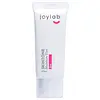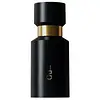What's inside
What's inside
 Key Ingredients
Key Ingredients

 Benefits
Benefits

 Concerns
Concerns

 Ingredients Side-by-side
Ingredients Side-by-side

Water
Skin ConditioningTitanium Dioxide
Cosmetic ColorantEthylhexyl Methoxycinnamate
UV AbsorberEthylhexyl Palmitate
EmollientMethyl Trimethicone
Skin ConditioningZinc Oxide
Cosmetic ColorantPentaerythrityl Tetraethylhexanoate
EmollientCetyl Ethylhexanoate
EmollientDicaprylyl Carbonate
EmollientDimethicone
EmollientCetyl PEG/PPG-10/1 Dimethicone
EmulsifyingGlycerin
HumectantPentylene Glycol
Skin ConditioningCI 77492
Cosmetic ColorantLauryl PEG-8 Dimethicone
Butylene Glycol
HumectantTrimethylsiloxysilicate
EmollientDisteardimonium Hectorite
StabilisingDimethicone/Vinyl Dimethicone Crosspolymer
Skin ConditioningMagnesium Sulfate
Synthetic Fluorphlogopite
Phenoxyethanol
PreservativeGlyceryl Tribehenate/Isostearate/Eicosandioate
EmollientCI 77491
Cosmetic ColorantNylon-12
Aluminum Hydroxide
EmollientSilica
AbrasiveBetaine
HumectantStearic Acid
CleansingCI 77499
Cosmetic ColorantTriethoxycaprylylsilane
Ethylhexylglycerin
Skin ConditioningDisodium EDTA
1,2-Hexanediol
Skin ConditioningTocopherol
AntioxidantAllantoin
Skin ConditioningCaffeine
Skin ConditioningWater, Titanium Dioxide, Ethylhexyl Methoxycinnamate, Ethylhexyl Palmitate, Methyl Trimethicone, Zinc Oxide, Pentaerythrityl Tetraethylhexanoate, Cetyl Ethylhexanoate, Dicaprylyl Carbonate, Dimethicone, Cetyl PEG/PPG-10/1 Dimethicone, Glycerin, Pentylene Glycol, CI 77492, Lauryl PEG-8 Dimethicone, Butylene Glycol, Trimethylsiloxysilicate, Disteardimonium Hectorite, Dimethicone/Vinyl Dimethicone Crosspolymer, Magnesium Sulfate, Synthetic Fluorphlogopite, Phenoxyethanol, Glyceryl Tribehenate/Isostearate/Eicosandioate, CI 77491, Nylon-12, Aluminum Hydroxide, Silica, Betaine, Stearic Acid, CI 77499, Triethoxycaprylylsilane, Ethylhexylglycerin, Disodium EDTA, 1,2-Hexanediol, Tocopherol, Allantoin, Caffeine
Water
Skin ConditioningCyclopentasiloxane
EmollientTitanium Dioxide
Cosmetic ColorantEthylhexyl Methoxycinnamate
UV AbsorberMethyl Trimethicone
Skin ConditioningGlycerin
HumectantButylene Glycol
HumectantEthylhexyl Salicylate
UV AbsorberPolymethylsilsesquioxane
Isononyl Isononanoate
EmollientNiacinamide
Smoothing1,2-Hexanediol
Skin ConditioningPolysorbate 60
EmulsifyingTridecyl Trimellitate
EmollientMethyl Methacrylate Crosspolymer
Triceteareth-4 Phosphate
EmulsifyingGlycol Stearate
EmollientPotassium Cetyl Phosphate
EmulsifyingBis-Ethylhexyloxyphenol Methoxyphenyl Triazine
Skin ConditioningGlyceryl Stearate
EmollientPEG-100 Stearate
PEG-2 Stearate
EmulsifyingVp/Eicosene Copolymer
Ammonium Acryloyldimethyltaurate/Vp Copolymer
Aluminum Hydroxide
EmollientPolyhydroxystearic Acid
EmulsifyingPEG-10 Dimethicone
Skin ConditioningTriethoxycaprylylsilane
Stearic Acid
CleansingSodium Acrylate/Sodium Acryloyldimethyl Taurate Copolymer
Emulsion StabilisingAdenosine
Skin ConditioningPEG-240
HumectantNeopentyl Glycol Diethylhexanoate
EmollientIsohexadecane
EmollientTrisodium Ethylenediamine Disuccinate
Polysorbate 80
EmulsifyingSorbitan Oleate
EmulsifyingPotassium Laurate
EmulsifyingBHT
AntioxidantBakuchiol
AntimicrobialMadecassoside
AntioxidantHyaluronic Acid
HumectantHydrolyzed Hyaluronic Acid
HumectantSodium Hyaluronate
HumectantArtemisia Capillaris Extract
Phenoxyethanol
PreservativeArtemisia Princeps Leaf Extract
Skin ConditioningXanthium Strumarium Fruit Extract
Skin ConditioningPrunella Vulgaris Flower/Leaf/Stem Extract
Skin ProtectingCetraria Islandica Extract
CleansingOleanolic Acid
Skin ConditioningEthylhexylglycerin
Skin ConditioningCopper Tripeptide-1
Skin ConditioningAcetyl Hexapeptide-8
HumectantCI 77492
Cosmetic ColorantCI 77491
Cosmetic ColorantCI 77499
Cosmetic ColorantWater, Cyclopentasiloxane, Titanium Dioxide, Ethylhexyl Methoxycinnamate, Methyl Trimethicone, Glycerin, Butylene Glycol, Ethylhexyl Salicylate, Polymethylsilsesquioxane, Isononyl Isononanoate, Niacinamide, 1,2-Hexanediol, Polysorbate 60, Tridecyl Trimellitate, Methyl Methacrylate Crosspolymer, Triceteareth-4 Phosphate, Glycol Stearate, Potassium Cetyl Phosphate, Bis-Ethylhexyloxyphenol Methoxyphenyl Triazine, Glyceryl Stearate, PEG-100 Stearate, PEG-2 Stearate, Vp/Eicosene Copolymer, Ammonium Acryloyldimethyltaurate/Vp Copolymer, Aluminum Hydroxide, Polyhydroxystearic Acid, PEG-10 Dimethicone, Triethoxycaprylylsilane, Stearic Acid, Sodium Acrylate/Sodium Acryloyldimethyl Taurate Copolymer, Adenosine, PEG-240, Neopentyl Glycol Diethylhexanoate, Isohexadecane, Trisodium Ethylenediamine Disuccinate, Polysorbate 80, Sorbitan Oleate, Potassium Laurate, BHT, Bakuchiol, Madecassoside, Hyaluronic Acid, Hydrolyzed Hyaluronic Acid, Sodium Hyaluronate, Artemisia Capillaris Extract, Phenoxyethanol, Artemisia Princeps Leaf Extract, Xanthium Strumarium Fruit Extract, Prunella Vulgaris Flower/Leaf/Stem Extract, Cetraria Islandica Extract, Oleanolic Acid, Ethylhexylglycerin, Copper Tripeptide-1, Acetyl Hexapeptide-8, CI 77492, CI 77491, CI 77499
Ingredients Explained
These ingredients are found in both products.
Ingredients higher up in an ingredient list are typically present in a larger amount.
1,2-Hexanediol is a synthetic liquid and another multi-functional powerhouse.
It is a:
- Humectant, drawing moisture into the skin
- Emollient, helping to soften skin
- Solvent, dispersing and stabilizing formulas
- Preservative booster, enhancing the antimicrobial activity of other preservatives
Aluminum Hydroxide is a form of aluminum. It can be naturally found in nature as the mineral gibbsite. In cosmetics, Aluminum Hydroxide is used as a colorant, pH adjuster, and absorbent.
As a colorant, Aluminum Hydroxide may add opacity, or reduce the transparency. Aluminum hydroxide is contains both basic and acidic properties.
According to manufacturers, this ingredient is an emollient and humectant. This means it helps hydrate the skin.
In medicine, this ingredient is used to help relieve heartburn and help heal ulcers.
There is currently no credible scientific evidence linking aluminum hydroxide in cosmetics to increased cancer risk.
Major health organizations allow the use of aluminum hydroxide in personal care products and have not flagged it as a carcinogenic risk at typical usage levels.
Learn more about Aluminum HydroxideButylene Glycol (or BG) is used within cosmetic products for a few different reasons:
Overall, Butylene Glycol is a safe and well-rounded ingredient that works well with other ingredients.
Though this ingredient works well with most skin types, some people with sensitive skin may experience a reaction such as allergic rashes, closed comedones, or itchiness.
Learn more about Butylene GlycolCi 77491 is also hydrated iron III oxide. It's sole purpose is to give a red/pink hue to products.
Iron III oxides are classified as inorganic chemicals for coloring.
Synthetically created Ci 77491 is considered safer than those naturally found. This is because the synthetically created version may contain less impurities. Iron oxides are generally non-toxic and non-allergenic.
Learn more about CI 77491Ci 77492 is also hydrated iron III oxide. It's sole purpose is to give a yellow hue to products.
Iron III oxides are classified as inorganic chemicals for coloring.
Synthetically created Ci 77492 is considered safer than those naturally found. This is because the synthetically created version may contain less impurities. Iron oxides are generally non-toxic and non-allergenic.
Learn more about CI 77492Ci 77499 is also hydrated iron III oxide. It is created from mixing red and black iron oxides. This helps give shades of darkness to a product.
Iron III oxides are classified as inorganic chemicals for coloring.
Ethylhexyl Methoxycinnamate is an organic compound that provides UVB protection. It often goes by the more common name of octinoxate. It is created from methoxycinnamic acid and 2-ethylhexanol.
Ethylhexyl Methoxycinnamate absorbs UVB rays with wavelengths between 280-320 nm. UV absorbers protect your skin by using chemical reactions to convert UV rays into heat and energy.
UVB (290-320 nm) rays emit more energy than UVA rays. They are capable of damaging DNA, causing sunburns and are thought to be linked to skin cancer.
The state of Hawaii has banned sunscreens containing octinoxate due to its potential impact on coral reefs. More research is needed to bridge gaps in this research. The European Union allows higher levels of octinoxate in sunscreens than the US and Australia.
Ethylhexyl Methoxycinnamate is oil soluble. It is not stable and may lose efficacy when exposed to sunlight.
Learn more about Ethylhexyl MethoxycinnamateEthylhexylglycerin (we can't pronounce this either) is commonly used as a preservative and skin softener. It is derived from glyceryl.
You might see Ethylhexylglycerin often paired with other preservatives such as phenoxyethanol. Ethylhexylglycerin has been found to increase the effectiveness of these other preservatives.
Glycerin is already naturally found in your skin. It helps moisturize and protect your skin.
A study from 2016 found glycerin to be more effective as a humectant than AHAs and hyaluronic acid.
As a humectant, it helps the skin stay hydrated by pulling moisture to your skin. The low molecular weight of glycerin allows it to pull moisture into the deeper layers of your skin.
Hydrated skin improves your skin barrier; Your skin barrier helps protect against irritants and bacteria.
Glycerin has also been found to have antimicrobial and antiviral properties. Due to these properties, glycerin is often used in wound and burn treatments.
In cosmetics, glycerin is usually derived from plants such as soybean or palm. However, it can also be sourced from animals, such as tallow or animal fat.
This ingredient is organic, colorless, odorless, and non-toxic.
Glycerin is the name for this ingredient in American English. British English uses Glycerol/Glycerine.
Learn more about GlycerinMethyl Trimethicone is a type of silicone. It is a solvent and emulsifier.
Solvents are used to keep ingredients together in a product. They can help dissolve ingredients to stable bases or help evenly distribute ingredients throughout the product.
Emulsifiers help stabilize a product. It does this by preventing certain ingredients from separating.
Methyl Trimethicone does not get absorbed into the skin.
Learn more about Methyl TrimethiconePhenoxyethanol is a preservative that has germicide, antimicrobial, and aromatic properties. Studies show that phenoxyethanol can prevent microbial growth. By itself, it has a scent that is similar to that of a rose.
It's often used in formulations along with Caprylyl Glycol to preserve the shelf life of products.
Stearic Acid is a fatty acid. It is an emollient, emulsifier, and texture enhancer.
As an emollient, stearic acid helps soften skin. It aids the skin's protective barrier by preventing water loss. It also provides a gentle cleansing effect without stripping away natural oils.
Stearic acid may also be used to enhance the texture of products. It can add volume and stabilize ingredients such as water and oil. This can help water and oil ingredients from separating.
Sources of stearic acid include animal or vegetable fats/oils such as coconut or shea. It can be naturally found in butter, cocoa butter, shea butter, vegetable fats, and animal tallow.
This ingredient may not be Malassezia folliculitis, or fungal-acne safe.
Learn more about Stearic AcidTitanium dioxide is a mineral UV filter widely used in sunscreens and cosmetics.
It is one of only two UV filters officially classified as “mineral” by regulatory agencies, the other being zinc oxide.
Titanium dioxide provides broad-spectrum protection mostly in the UVB and UVAII range, with some protection in the UVAI range.
While its UVA protection isn’t as strong as zinc oxide’s, the difference is minor.
A common myth is that mineral UV filters reflect UV light. However, modern research shows titanium dioxide absorbs UV radiation like chemical filters (~95% absorption & 5% reflection).
Thanks to its non-irritating nature, titanium dioxide is suitable for sensitive, acne-prone, or redness-prone skin. It is unlikely to cause "eye sting" like other sunscreen ingredients.
A major drawback of this ingredient is its white cast and thick texture. This is why mineral sunscreens often leave a white cast and are less cosmetically elegant than chemical/hybrid sunscreens.
To improve white cast and spreadability, micronized or nano-sized titanium dioxide is often used.
There are ongoing concerns surrounding nano-titanium oxide's impact on marine ecosystems.
There is no conclusive evidence that any form of titanium oxide (or any other sunscreen ingredients) will cause harm to marine ecosystems or coral reefs. The science is still developing but many consumers are keeping a close eye on this issue.
Please note, many destinations have reef-safety sunscreen rules. For instance, the U.S. Virgin Islands advises all visitors to use non-nano mineral sunscreens.
Nano mineral sunscreens once raised safety concerns about absorption into skin.
Extensive research has shown that they do not penetrate healthy or damaged skin; they remain safely on the surface and the top layer of dead skin (stratum corneum).
You'll likely find titanium dioxide bundled with alumina, silica, or dimethicone. These ingredients help make titanium dioxide highly photostable; this prevents it from interacting with other formula components under UV light.
Learn more about Titanium DioxideTriethoxycaprylylsilane is a silicone used to bind and stabilize ingredients.
As an emulsifier, it helps prevent ingredients from separating. This can help elongate the shelf life of products.
Triethoxycaprylylsilane is often used to coat mineral sunscreens ingredients to help give a better feel. It also helps reduce oxidative stress in sunscreens.
Learn more about TriethoxycaprylylsilaneWater. It's the most common cosmetic ingredient of all. You'll usually see it at the top of ingredient lists, meaning that it makes up the largest part of the product.
So why is it so popular? Water most often acts as a solvent - this means that it helps dissolve other ingredients into the formulation.
You'll also recognize water as that liquid we all need to stay alive. If you see this, drink a glass of water. Stay hydrated!
Learn more about Water